Egypt Connection 2
Sultana N. Nahar
Note by the Editor: A previous article by Dr. Nahar on her continuing relationship with universities in Egypt appeared in our Fall 2012 Newsletter.
I went to Egypt to teach a condensed course on "Atomic Spectroscopy and Opacity" during February and March of 2013, a period of post-revolution protests. The teaching was arranged under the Memorandum of Agreement (MOA) between Ohio State University and Cairo University. Despite the unrest I did not face any problems while there. There was a considerable reduction in western tourists. I noticed positive changes in education and benefits for the poor that Morsi had brought to Egypt. During the visit, I had contact with a number of universities, each with a great urge for knowledge, research collaboration, and raising educational standards to the levels in US universities. At several institutions I donated books to their library.
A notice of my spectroscopy course was widely circulated in Arabic on campus as well as to a number of universities and institutes. Participants were postgraduate students (masters or Ph.D.), researchers, and faculty members wanting to review the materials and learn of new research advances.In addition to those from Cairo University and the National Institute of Laser Enhanced Sciences (NILES), they came from other institutes: Al Azhar University, the Egyptian Atomic Energy Authority, Menoufiya University, National Research Center, Minya University, and Zewail City of Science and Technology. It was an enjoyable experience for me to see the interest in the participants in the two-hour lectures presented three times a week for three weeks. The course covered material from eight chapters of the textbook "Atomic Astrophysics and Spectroscopy" (Cambridge University press, 2011) that I coauthored. We also had computer labs running an atomic structure program and R-matrix codes to initiate research projects and there was one final exam.
Teaching the course gave me the opportunity to know the participants and their academic and research status.I visited laser labs and nanotechnology labs. Popular research interests are in the study of laser produced plasmas, solar cells, graphene properties, and magnetic field effects. Posters from regional conferences hang on the lab walls.
One young and very active associate professor at NILES, Dr. Mona Bakry, who graduated from Georgia Tech, is also the head of a private nanotechnology lab where she leads a team of 22 postgraduate students and researchers from NILES as well as from a few other places who work on various topics in nanotechnology. She was very pleased to show me the electron microscope and a high resolution image taken by two students. She also treated Professor El Nadi and myself to dinner at the Mall of Arabia.
There is interest in extending the MOA between OSU and Cairo University to include medical research and training. The director of NILES, who is a physician, spoke about possible research collaboration in laser applications in medicine. I also had meetings at the National Cancer Institute (NCI) hosted by Cairo University, with the Heads of the Virology and Immunity Department, Radiation Oncology, and Department of Surgery of Liver and Digestive systems as well as with graduate students doing stem cell research.
The most common cancers in Egypt are liver and breast. In Professor Zekri's lab at NCI, Ph.D. student Ola works on stem cells to differentiate them into liver cells which are given directly to patients. They have done extensive research on irradiation on patients, injecting the nanoparticles of radiosensitizing agents, and on the structure and shape of the nanoparticles for dose absorption. Animal rights is still under debate in Egypt. Hence, they could carry out experiments on rats and see the effects rather easily. There are also terminally ill patients who volunteer for the experiments. The resonant physics with low energy X-rays that we proposed was of great interest for NCI research. A draft plan was made to formulate cooperation in cancer research. There is a strong desire and motivation for collaboration in advanced research and training in developed countries. The sophisticated lab equipment they use is from the US or Germany and so they face serious delays when an instrument malfunctions and requires repair or parts.
My course ended in March. Each participant received a well-deserved certificate from the Dean of the Faculty of Science in a ceremony held in Cairo University’s Ibn Sina Hall (Ibn Sina, 980-1037, a great scholar particularly noted for books on medicine). Many compliments and appreciation about the course were conveyed to the Dean. At the Festival for Thanks for Loyalty which recognized faculty achievements and honored retirees, I was given the "Shield of the Faculty of Science" award and a certificate for teaching and introducing the STEM program in Cairo University.
I met with faculty members of Beni Suef University, Suez Canal University, and Al Azhar University, largely to discuss future research directions. All these institutions are active in research and are keen on research cooperation with Ohio State University and for guidance to raise education standards. Suez Canal University is building a center for excellence in laser experiments. I also had discussions on research collaboration with Dr. Tamer Elkfrawy of Ain Shams University where I presented a seminar and contributed a number of books. Elkfrawy, a young faculty member who I have known since his graduate studies as a top student at Western Michigan University presented a very good seminar after mine.
With Professor Lotfia El Nadi, I met with the Dean and vice Dean of the Faculty of Science of Alexandria University (next to the Mediterranean). This university is expanding and a few new departments have opened. This is the university where Ahmed Zewail, (known as the “father of femtochemistry, 1999 Nobel Prize in Chemistry), earned his bachelor’s degree. We spoke about research collaboration and a joint proposal under the US - Egypt agreement. Alexandria University has a campus next to Bibliotheca Alexandria. The 2300 year-old library founded by Ptolemy during Alexander's ruling of Egypt was destroyed after about 700 years of existence. It has been rebuilt with the help of the United Nations and other contributions. It has a huge circular wall at the front above the entrance floor with scripts from languages from all over the world, and inside a space for 2000 readers in the 5-story slanting structure with glass roof.
It was impressive to visit the Zewail City of Science and Technology founded by Ahmed Zewail of Caltech. Professor Lotfia El Nadi arranged for me to visit the centers for Nanotechnology and Theoretical Physics, and the provost of the Zewail City. A very high sense of inspiration and dedication exists at Zewail. It may become an innovative brainstorming center for the Arab and African countries. During my visit, I met seven scientists who gave up their jobs in the US, Canada, Germany, and Italy to take positions at Zewail City. The nanotechnolgy group is doing cutting edge research, has a large research grant and is closely linked to Intel. The physics group participated in the Higgs discovery and several Egyptian physicists participate in experiments at CERN.
The land donated by the Egyptian Government is surrounded by a wall and Zewail City is still under development.Members are working overtime to complete construction. Four out of eight centers are now in operation. The huge sky blue glass administrative building at the front and the building for research and academia behind it have been built with spaces to hold large poster sessions and for events in the open air with a stage.There are open discussion areas and circular skylights along hallways. Rain is rare in Cairo and most of Egypt so a gathering space without a roof should not cause scheduling problems. There will be short and longtime visitor programs for researchers and students from many countries. There will be a Ph.D. program for the most talented students in Egypt and surrounding countries. I was invited to give a seminar at Zewail City.
During my meetings with faculty members of various universities, my guidance for advanced research and new areas of importance was requested. I wondered how to connect the objectives of all these institutions and the desire for knowledge into a fast-track framework for advancing Egyptian research and science education.
During my Egypt visit another task was completed. I had been working for a couple of years on initiating a STEM program to enhance in-class teaching in Cairo University. The program recognizes teachers, with input from the students, for their guidance for the students’ best learning and research experiences. This STEM program also encourages students to do well in research and recognizes each year the two best Ph.D. graduating students, one male and one female, and the best MSc graduating student. The proposal received final approval from the university on December 26, 2012. The certificate ceremony for my course participants was extended to recognize teachers and students under the STEM program for the first time. Two faculty members, one for best teaching and one for best research guidance, and three students received prizes.
I made progress at Al Azhar University on initiating the STEM program there in the Physics Departments (in male and female branches) and in the Astronomy and Meteorology Department. The objective of the program is to enhance excellence in education and research in physics and astronomy. The program includes recognition of four faculty members and three Ph.D. and three Masters students in Physics Departments (male and female campus) and in the Astronomy and Meteorology Department. Student involvement in teacher recognition was an issue. However, with some modifications the program has been approved by the university. I met the faculty members of the three departments, and the Dean of the Faculty of Science. I gave a seminar attended by members in these departments. They appreciated learning of new advances in research. Physics faculty members from the female branch treated us at the restaurant inside the beautiful Al Masa resort. They are also members of the International Society of Muslim Women in Science that I founded.
I am indebted to Professor Lotfia El Nadi of Cairo University and founder of NILES for helping make my efforts in Egypt possible. Both of us founded the International Society of Arab Women in Science (ISAWS) in 2010 which has now 240 members from seven Arab and Middle Eastern countries. Several women scientists signed up for ISAWS during two conferences, one on nanotechnology organized by Beni Suef and Cairo University and one on biomedicine organized by Ain Shams University. Quite a number of people also signed up for the International Society of Muslim Women in Science (ISMWS).
Giving the course at Cairo University I came to learn of more issues on women in science. Compared to other Arab counties, Egypt has more professional female scientists. The reason behind this is more support from the parents and relatively more acceptance by society. However, I was also told of the issue of conservative husbands restricting their wives with degrees in science and engineering from having professional lives, and also from attending conferences. Professor Yosr of Cairo University who spent eleven years in King Aziz University in Saudi Arabia became very supportive of ISMWS. She connected me to two professors in Saudi Arabia regarding registration of ISMWS.
Overall I had a wonderful experience in Egypt.
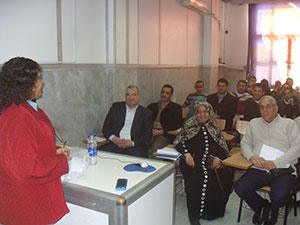
Figure 1: Course lecture in Cairo University. Participants are postgraduate students, researchers and faculty members.
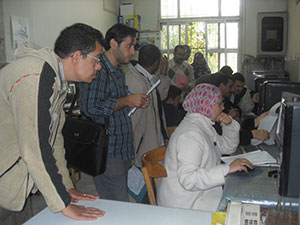
Figure 2. Running programs on atomic calculations was part of the course.
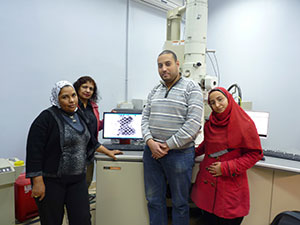
Figure 3: Dr. Mona Bakry with students in front of the electron microscope.
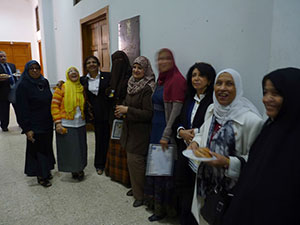
Figure 4: Female researchers with certificates after the course.
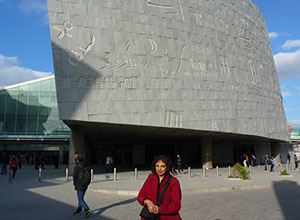
Figure 5: Bibliotheca Alexandria next to the University
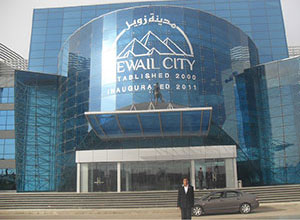
Figure 6. Standing in front of Zewail City of Science and Technology.

Figure 7. Professor Ali of Cairo University receives the award for best research guidance. Ali has a large group of motivated students. This is the first award of its kind in Cairo University.
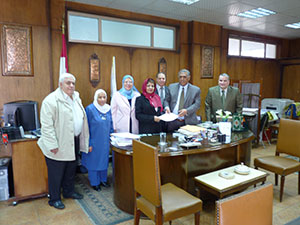
Figure 8. At Al Azhar University the Dean of the Faculty of Science and Nahar together hold the STEM proposal for physics and astronomy. It took a significant effort to people of the importance of faculty recognition by students.
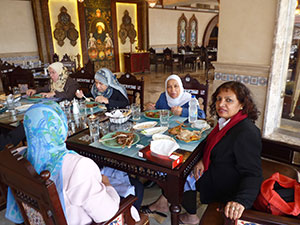
Figure 9. Lunch hosted by Al Azhar faculty members of the female campus at the Al Masah restaurant with Ali Pasha portrait at the center.

Figure 10. ISMWS members at the palace of Sultan Qalauun who had school, mosque and the hospital attached to the palace. Each member has a vision of professional research life.
Dr. Sultana N. Nahar, a American physicist is a research scientist in the Department of Astronomy at Ohio State University and an elected member of the FIP Executive Committee. She has published extensively on radiative and collisional atomic processes in astrophysical and laboratory plasmas, and also worked on dielectronic satellite lines, theoretical spectroscopy, and computational nanospectroscopy for biomedical applications. Sultana Nahar is the winner of the APS 2013 John Wheatley Award. Email: nahar@astronomy.ohio-state.edu
Disclaimer - The articles and opinion pieces found in this issue of the APS Forum on International Physics Newsletter are not peer refereed and represent solely the views of the authors and not necessarily the views of the APS.
